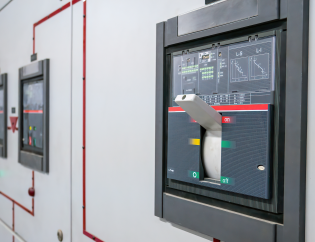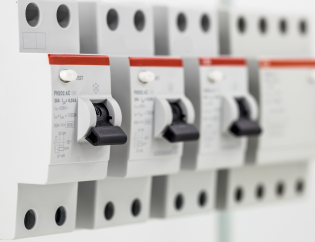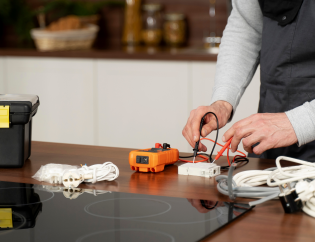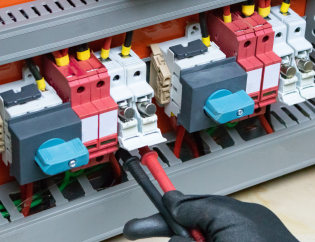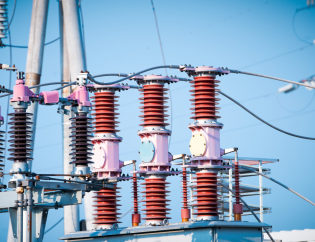Types of Faults
There are three main types of faults in electrical power systems. Each of them are discussed along with their causes and effects in detail below.
1. Open Circuit Faults
An open circuit fault is a type of fault that occurs when a circuit is interrupted due to a broken or disconnected conductor. In a power system, an open circuit fault can occur in one or more conductors, leading to a loss of continuity in the circuit.
Open circuit faults are also called series faults because they occur in series with the line. These types of faults can impact the reliability and performance of the system.
There are three categories of open circuit faults termed as:
- Open conductor fault
- Two conductors open fault
- Three conductors open fault
Causes:
- Broken conductors: This can occur due to factors such as physical damage, corrosion, or fatigue.
- Loose connections: Connections can become loose due to thermal expansion/contraction, vibration, or inadequate tightening during installation.
- Faulty switches: Switches can fail due to various factors, such as overloading, aging, or wear and tear.
Effects:
- Interruption of power supply: Open circuit faults can cause power outages, significantly affecting businesses and individuals.
- Damage to equipment: When an open circuit fault occurs, there can be a sudden surge in voltage, which can damage electrical equipment.
- Safety hazards: An open circuit fault can sometimes pose safety hazards, such as electrical shock or fire.
2. Short Circuit Faults
Short circuit faults occur when two or more conductors come into contact with each other, creating a low resistance path for current flow. These faults can be caused by equipment failure, human error, or environmental factors such as lightning strikes.
Causes:
- Equipment failure: Short circuit faults can occur due to equipment failure, such as a transformer winding shorting out.
- Human error: Accidental contact between conductors, such as when a tool is dropped across two conductors, can cause a short circuit fault.
- Environmental factors: Lightning strikes can cause short circuit faults by creating a path of low resistance through the power system.
Effects:
- Overheating of equipment: Short circuit faults can cause a sudden surge in current, resulting in overheating of equipment, such as transformers, switchgear, or motors.
- Damage to equipment: The sudden surge in current can also cause damage to equipment, such as burnt-out windings or blown fuses.
- Fires: In extreme cases, short circuit faults can cause fires, seriously affecting people and property.
Ensure the safety of your electrical systems with ECSKSA. Contact us now at for expert electrical care services.
3. Symmetrical & Unsymmetrical Faults:
Symmetrical Faults:
Symmetrical faults, also known as balanced faults, occur in three-phase power systems when all three phases have the same magnitude. These types of faults can be caused by equipment failure or external factors like lightning strikes and can significantly impact the performance and reliability of the power system.
Causes:
- Equipment failure: A transformer winding shorting out can cause a symmetrical fault.
- Lightning strikes: Lightning can cause a symmetrical fault by creating a low resistance path through the power system.
Effects:
- Interruption of power supply: Symmetrical faults can cause power outages, significantly affecting businesses and individuals.
- Damage to equipment: The sudden surge in current can cause damage to electrical equipment.
- Safety hazards: A symmetrical fault can sometimes pose safety hazards, such as electrical shock or fire.
Unsymmetrical Faults:
Unsymmetrical faults occur when the three-phase voltages and/or currents are unequal and/or displaced by the same angle. This type of fault can be caused by various factors, including broken conductors, faulty transformers, and faulty switches.
Causes:
- Equipment failure: A transformer winding shorting out can cause an unsymmetrical fault.
- Broken conductors: Broken conductors can cause unsymmetrical faults, as the current in the faulty phase will differ from the other two.
- Faulty switches: They can cause unsymmetrical faults, as they may not connect all three phases properly.
Effects:
- Overheating of equipment: Unsymmetrical faults can cause a sudden surge in current, resulting in overheating of equipment, such as transformers, switchgear, or motors.
- Damage to equipment: The sudden surge in current can also cause damage to equipment, such as burnt-out windings or blown fuses.
- Imbalance in the system: Unsymmetrical faults can cause an imbalance in the three-phase system, affecting the power supply’s quality.
Conclusion
In conclusion, electrical faults can occur due to various factors, including equipment failure, environmental factors, and human error. These faults can have significant consequences, including equipment damage, power supply interruption, and safety hazards. It is essential to have proper protection systems in place to detect and isolate faults quickly to minimize their impact on the power system.
To safeguard your electrical systems from faults, it is crucial to have reliable protection systems in place. Contact us today to learn how our expert electricians at ECSKSA can help you prevent equipment damage, power supply interruptions, and safety hazards caused by electrical faults. Don’t wait until it’s too late; call us now at +966-12-289-2200 and secure your electrical systems today.
Do you have a question in your mind? If so, make sure to fill out the form below!


